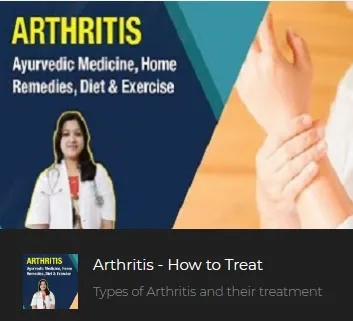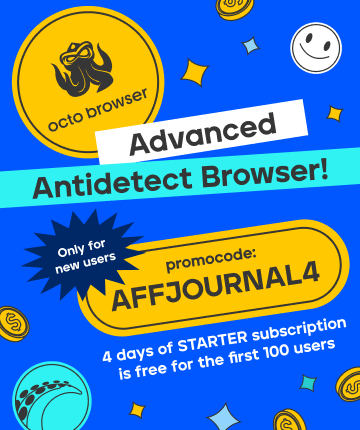

by Editor
Knowing what drives a customer when making a purchase, which motives to emphasize in creatives, is essential for a successful campaign. Simply copying phrases and images from competitors without analyzing your target audience will lead to a budget drain. Let's explore how to capture customers' attention when promoting nutra offers, why people buy such products in general, and how to convince them of the benefits.
Reasons for making a purchase
Nutra is an evergreen vertical that will remain in demand for a long time. This is supported by data and forecasts from Statista: the market volume is growing each year, and by 2028, it is expected to approach the $308 billion mark.

What drives buyers of nutra products:
- the region has underdeveloped healthcare, lacks good doctors, or people inherently distrust the medical system;
- medical services are too expensive;
- supply issues, such as the region being remote from major cities;
- desire for quick results — for instance, a need to complete the course of treatment within a few months, and the results are needed as soon as possible
- trends, beauty standards, and fashion – for example, in Greece, there is a trend for white skin, or global trends that promote the idea of being slim;
- the desire to save money – some nutra offers are cheaper than pharmacy analogs.
Nutra products address these pains related to poor or expensive healthcare, unsanitary conditions, people's desires and insecurities. Depending on the type of product and its relevance to a specific audience segment, a person may make spontaneous purchases driven by emotions or take their time to decide, read reviews, gather information. Encouraging product choice can be achieved through a well-planned advertising strategy. For instance, offering a discount on the product is a clear benefit to the customer, and he may buy it to save money.
What emotions drive people to buy nutra:
- Curiosity. People have a natural tendency to seek out new and unusual things, or things that contain intrigue. You can grab their attention with unconventional product usage or clickbait headlines. The emotion of curiosity drives people to read through news, stories in storytelling, etc.
- Interest and thirst for knowledge. People are interested in interesting facts and new knowledge. Search queries containing questions like “how”, “why”, “what is…” are among the most popular. A person might read an article with a title like “How to treat arthritis” without necessarily experiencing joint pain – their motivation could be a desire to become smarter.

- Fears and insecurities. These fears are primarily linked to low self-esteem or a direct threat of illness. For instance, people may purchase products for penis enlargement because they are not confident they can satisfy their partner without these aids. Many individuals buy weight loss products out of fear of judgment: “I've gained weight, and my friends/colleagues will point fingers at me”. Products for dealing with parasites might be purchased under the influence of fear because having worms inside is considered highly dangerous and unpleasant.
- Desire for comfort. In older age, many people remain active, continue to build their careers, support their families, and want to maintain a vibrant lifestyle. However, their health may not be as it was in their youth, so they look for products to assist them in this pursuit.
- Maintaining one's status. Being healthy, slim, and youthful equates to success. A woman aged 40+ who doesn't have wrinkles appears well-groomed, respectable, and authoritative. For this reason, to look good in the eyes of society, maintain their personal brand, people also seek nutra offers.
- Caring for loved ones. Many users buy nutra products not for themselves but for their elderly relatives who may have difficulties accessing the internet or using technology. In many geos, family is the most important value, and younger family members do everything to ensure a decent life and help their parents. When targeting “senior” offers, don't overlook this segment.
How to evoke emotion in potential customers:
- Demonstrate the presence of a problem or illness. You can show symptoms (if the source allows it with lenient moderation), tell the story of a role model who resembles a potential customer. This way, you can evoke emotional connections and associations.
- Indicate right away that there is a solution. As soon as a problem is identified, a person immediately starts looking for a solution. If they see it here and now, there's a high chance they will be interested.
For each offer, it's necessary to identify audience segments. For example, for weight loss products, there can be several segments:
- men who want a sporty physique;
- young women who want to lose weight to look good for the beach season;
- moms who want to regain their pre-pregnancy figure;
- elderly individuals for whom weight loss is a necessity due to the associated risks like hypertension and poor well-being.
For each segment, you need different approaches and creatives. Promoting a weight loss product to elderly women should be different from promoting it to men or young women. To gather information about audience segments and their motivations, you can:
According to the text, here's how to gather information about audience segments and their motivations:
- study the offer's description and everything associated with it, including landing pages, pre-landing pages, and banners;
- consult with your affiliate manager, request statistics, and learn which audience is most responsive and what generates results;
- gather information about the geo from analytical portals, blogger reviews, and vlogs; understand the state of healthcare in the region, what is available in pharmacies, and how people react when faced with illness;
- read local forums and news websites to identify regional trends and what’s popular;
- check the common search queries using Google tools like Trends and Keyword Planner;
- study competitors, spy services, and cases on internet;
- read reviews of similar products to learn what people are saying, what issues they are experiencing, and what they appreciate.
After gathering this information, you can identify audience segments. For example, if people in the region have a positive view of doctors, eagerly read expert opinions, and follow thought leaders, you can employ an “Interview with a doctor” approach. However, it's essential to clarify with your manager whether to use a real doctor or a fictional character.
This information can also provide insights into the region's economic capacity. If salaries are low, you can emphasize discounts, bonuses, gifts, and highlight that the product is affordable while still offering benefits. If the customers are well-off, their main concern would be efficiency, quick results, and comfort.
How to create creatives that evoke emotions
The creatives that a customer sees on social media or popular websites are often the first stage of the funnel. They should grab attention and spark interest so that potential buyers proceed to the next stages and eventually convert.
When creating compelling creatives, it's important to consider:
- quality and vibrant design - captivating, intriguing, and visually appealing images and videos;
- headlines and descriptions that highlight the problem and immediately showcase the benefits and solution;
- background and smart contrast - an important design element, as everything should be visible: the call to action, packaging, discount.

Creatives tend to burn out, so it's important to change and test different approaches. It's advisable to change creatives every two to three days for sources like TikTok and ad networks.
You can use several approaches for testing. Examples include teaser, news, medical, showing the consequences of the disease, celebrity interviews, and others. Each approach requires a set of creatives. When creating creatives, it's important to consider your manager's recommendations, the geo, requirements, and the specific nature of the traffic source, as well as the audience segments.
What can work:
- Present the offer in close-up with specific indications of its main properties and benefits.
- Show the product and results, for example, a close-up image of a person-model.
- Before and after. This approach works, but it's prohibited on some platforms, such as Facebook. So, you may need tricks and cloaking to bypass moderation.
- Shock content. This approach leverages the powerful fear trigger, but like “before and after”, it's not suitable for all sources. You can show worms, gangrene, amputations due to diabetes, the emotions of pain and sorrow on the face of a man who encountered impotence.
- Discounts and deadlines. The discount should be prominently displayed. It must be truthful – the information should match the landing page, and when a person goes to the landing page, they should also see the discount.
- Emphasis on natural ingredients. The creative should convince and demonstrate that the product contains no chemicals or synthetics.
- Concise text. It's important to show that the offer will quickly solve the problem, provide specific timeframes, and numbers.
- Understatement and intrigue. For example, “Try this, and you'll forget about pimples for life!”
- Positivity. The faces of happy people also generate interest and pleasant associations. It's important to adhere to the cultural code of the geo. For example, in Brazil, it's better to showcase Brazilian models or white models; in Europe, Europeans are preferred over individuals with darker skin or Asians.
Using these ideas, it's essential to appeal to facts and arguments. Users are intelligent adults who quickly recognize insincerity and misrepresentations. Losing trust is easy. Next, we'll explain how to build trust in your offer.
How to build trust in the offer
Buyers in many geos are not willing to spend money without a reason. Of course, there is a certain percentage of spontaneous purchases, but for the most part, people make decisions consciously, study information and reviews.
The question of trust is crucial. A webmaster can spend a significant budget on advertising, but if the audience doesn't trust it, there will be losses.
What will help establish trust:
- Reviews. These should be as convincing and sensible as possible, resembling real user reviews. Reviews containing personal information, such as last name, first name, city, and photos, will inspire more trust. It's essential to avoid stock photos and, if needed, generate photos using a neural network, such as “This person does not exist”.
- Statements and quotes from experts. For example, excerpts from interviews with doctors, quotes from famous athletes, actors, or fitness bloggers. It's crucial to verify with the account manager whether the advertiser permits the use of celebrities.
- Scientific data. This can include statistics, medical tests, research, and any relevant certificates if provided by the advertiser.
- Usage instructions. The customer needs to be assured that using the offer is simple, convenient, and safe.
- Product safety information. You should explain that the offer doesn't cause allergies, doesn't contain harmful substances, and is an over-the-counter product.
- Information about the duration of action. You should communicate that the offer has a long-lasting effect and, unlike pharmacy products, doesn't require frequent repurchase and spending. You should also mention how soon the customer will see results.
- FAQ section for typical user questions. In this section, you can provide short expert answers and address objections.
Avoid:
- Logical inaccuracies, outright lies. For example, “you will definitely lose 24 kg by tomorrow”.
- Complex professional terminology. For instance, Latin names of diseases, viruses, or plant names included in the product. Not all customers have a higher medical background. It's better to structure your text as if you are explaining the offer to a friend.
- Poor translation. Semantic and linguistic errors, mixed-up context not only hinder comprehension but also undermine trust. Due to translation mistakes, advertising can appear funny and absurd. After running your creatives through DeepL, it's advisable to invite a professional translator to review your text.
Conclusion
To develop successful and engaging creatives, you need to know your customer - what drives them, what triggers and emotions they experience, and what motivates them to make a purchase. This information can be gathered and analyzed by collecting all available data related to the offer and the geo. Your affiliate manager can also be a valuable resource in this process

by Editor



comments ....(0)
Leave a comment
You must be in to leave a comment